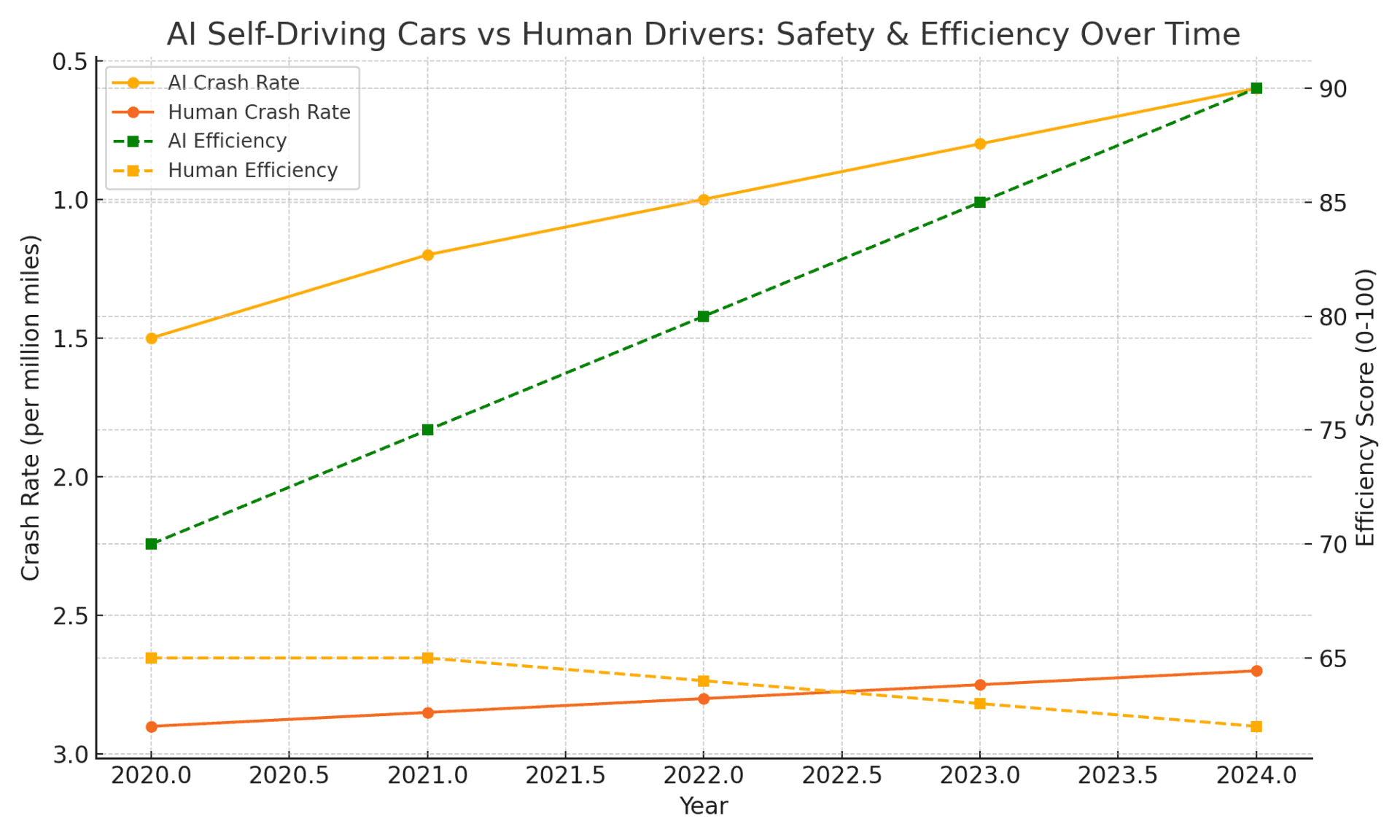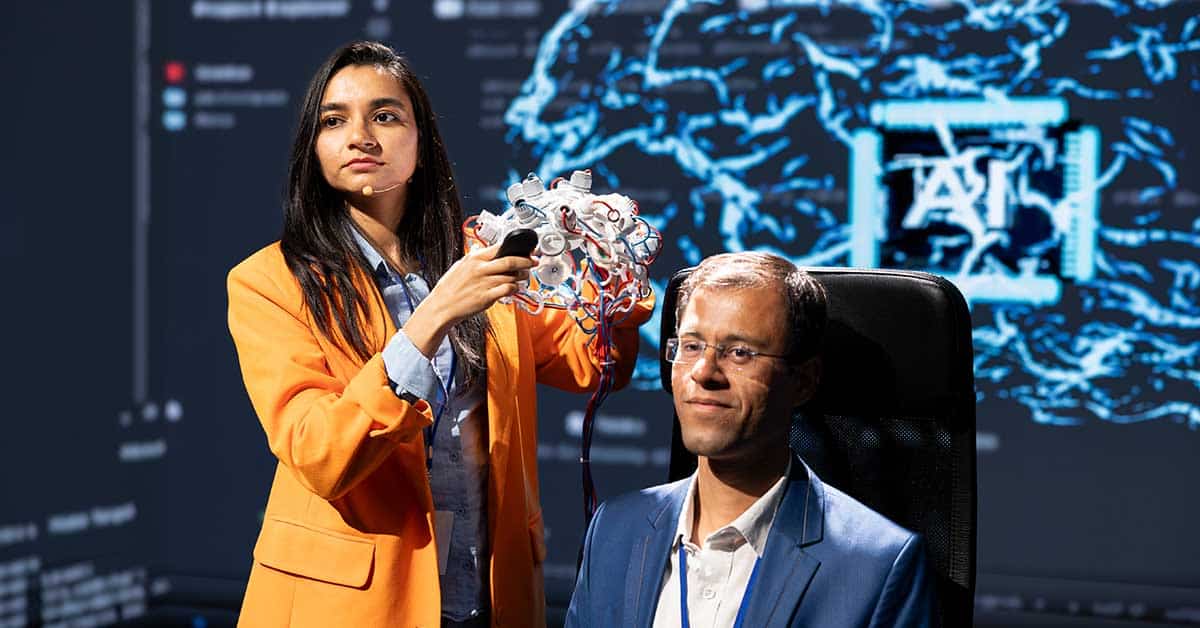Table of Contents
Introduction
Every day, approximately 16,200 motor vehicle crashes occur in the United States, resulting in about 116 fatalities and 6,500 injuries (NHTSA, 2024). With the advent of autonomous vehicles (AVs), a pressing question arises: Can AI-driven cars outperform human drivers in safety? This blog delves into recent empirical data to compare human driving errors with those of AI systems, highlighting the potential of AVs to revolutionize road safety.
The Prevalence of Human Error in Driving
Human error remains a leading cause of traffic accidents. In 2023, the National Highway Traffic Safety Administration (NHTSA) reported 40,901 traffic fatalities, with a significant portion attributed to human factors such as distraction, impairment, and speeding (NHTSA, 2024). Notably, distracted driving alone accounted for 3,275 deaths in 2023 (NHTSA, 2024).
AI-Driven Vehicles: A Safer Alternative?
Waymo’s Performance
Waymo, a pioneer in autonomous driving, has demonstrated impressive safety records. Between July 2024 and February 2025, Waymo vehicles were involved in 38 crashes, with only four attributed to the autonomous system itself (Jalopnik, 2025). Furthermore, a study by Swiss Re found that Waymo’s autonomous vehicles had 88% fewer property damage claims and 92% fewer bodily injury claims compared to human-driven vehicles over 25.3 million miles (Waymo, 2024).
Tesla’s Autopilot Statistics
Tesla’s Autopilot system has also shown promising results. In Q3 2024, Tesla reported one crash for every 7.08 million miles driven with Autopilot engaged, compared to one crash every 1.29 million miles without Autopilot (Teslarati, 2024). This indicates that vehicles using Autopilot experienced crashes approximately 5.5 times less frequently than those driven manually.

Limitations and Challenges of AI Systems
Despite their advantages, AI systems are not infallible. Research from the University at Buffalo highlighted vulnerabilities in AI perception, noting that certain objects could be rendered invisible to AI-powered radar systems under specific conditions (University at Buffalo, 2024). Additionally, Tesla’s Full Self-Driving (FSD) system has faced scrutiny, with at least two fatal accidents reported in 2024 involving the technology (Reuters, 2024).
Conclusion
Empirical data suggests that AI-driven vehicles, such as those operated by Waymo and Tesla, have the potential to significantly reduce traffic accidents compared to human drivers. However, challenges remain in ensuring these systems can handle complex and unpredictable scenarios. As technology advances, continued research and rigorous testing are essential to fully realize the safety benefits of autonomous vehicles.
References
- Jalopnik. (2025). Waymo’s Crashes Are Largely The Fault Of Us Mere Humans. Retrieved from https://www.jalopnik.com/1820845/waymo-car-crash-statistics/
- NHTSA. (2024). NHTSA Releases 2023 Traffic Deaths, 2024 Estimates. Retrieved from https://www.nhtsa.gov/press-releases/nhtsa-2023-traffic-fatalities-2024-estimates
- Reuters. (2024). US probes Tesla’s Full Self-Driving software in 2.4 mln cars after pedestrian killed in low visibility conditions. Retrieved from https://www.reuters.com/business/autos-transportation/nhtsa-opens-probe-into-24-mln-tesla-vehicles-over-full-self-driving-collisions-2024-10-18/
- Teslarati. (2024). Tesla publishes its Q3 2024 vehicle safety report. Retrieved from https://www.teslarati.com/tesla-publishes-q3-2024-vehicle-safety-report/
- University at Buffalo. (2024). UB researchers probe safety of AI in driverless cars, find vulnerabilities. Retrieved from https://www.buffalo.edu/ubnow/stories/2024/09/driverless-car-security.html
- Waymo. (2024). New Swiss Re study: Waymo is safer than even the most advanced …. Retrieved from https://waymo.com/blog/2024/12/new-swiss-re-study-waymo




